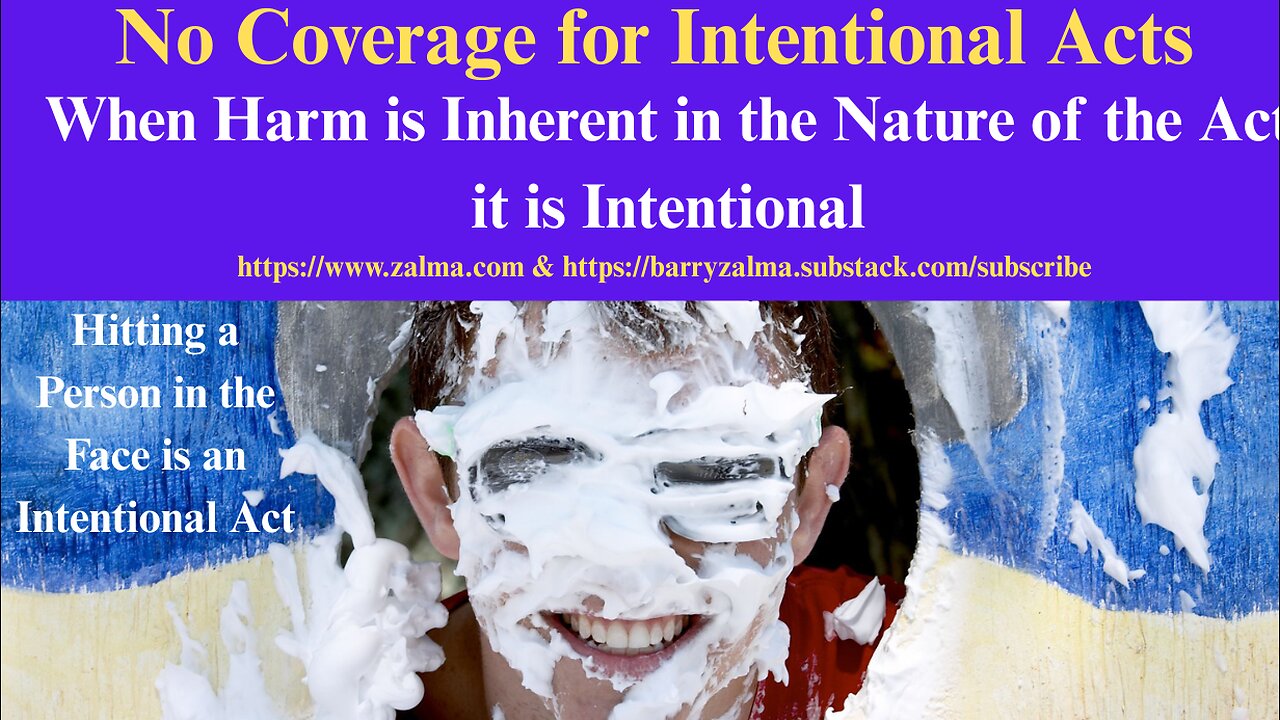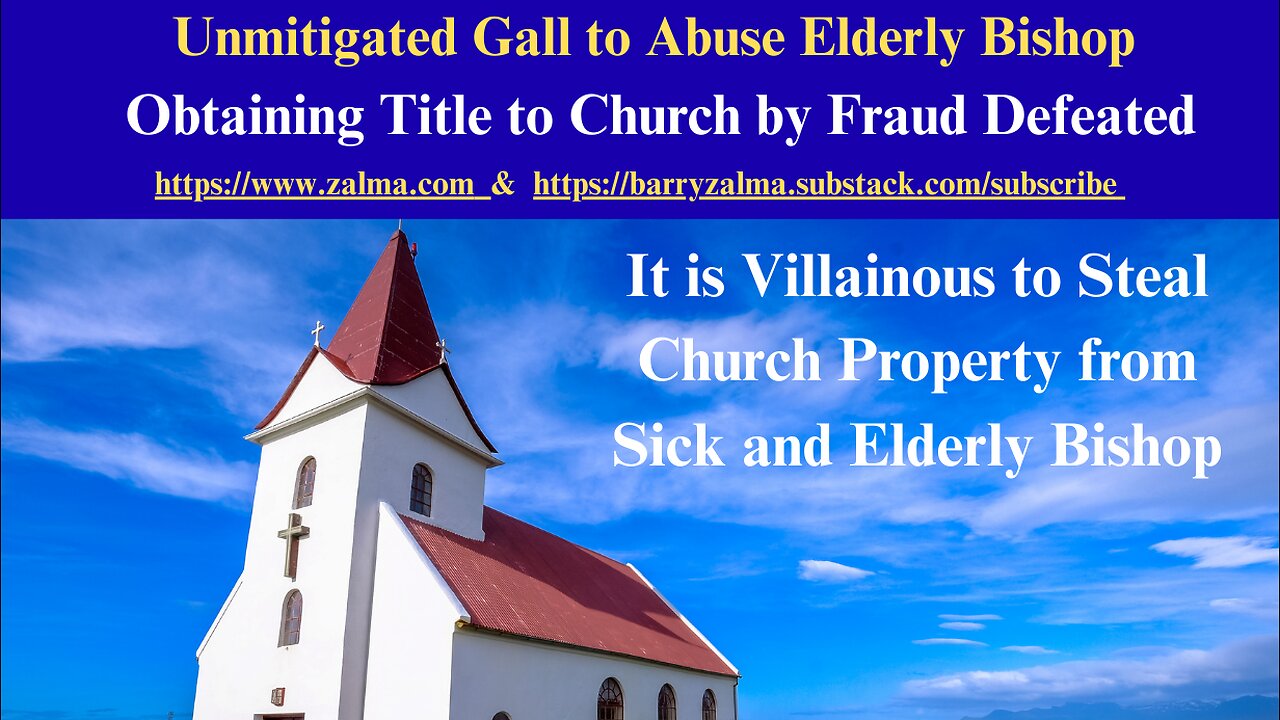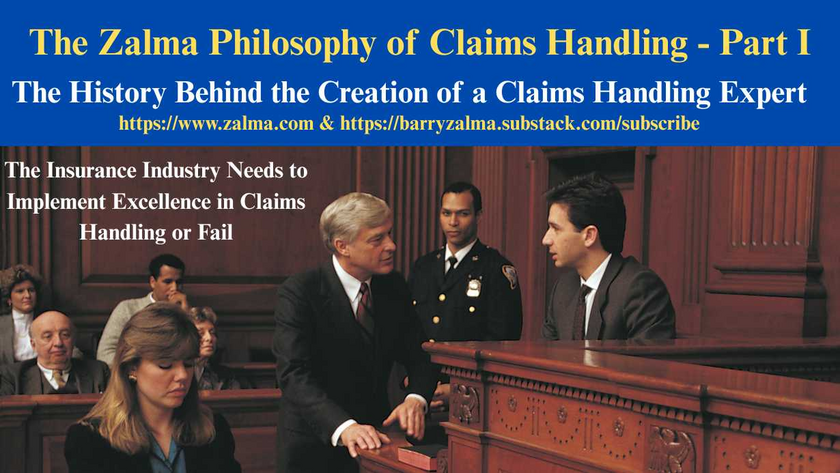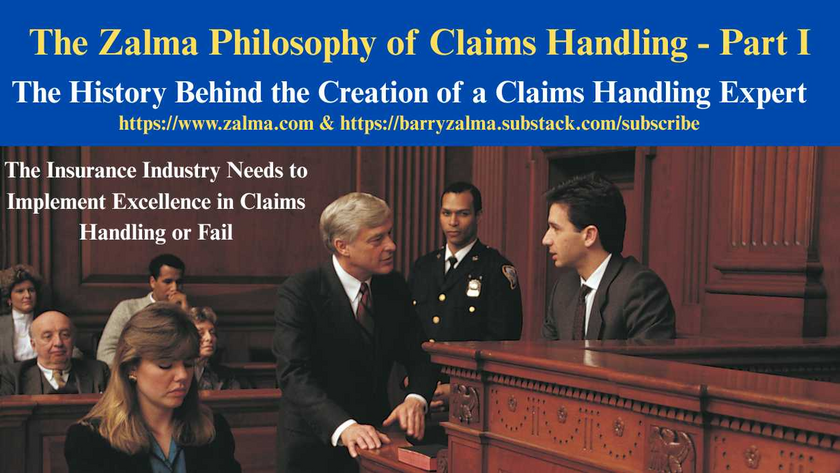
Insurance in The United States
Barry Zalma
just now
The first American insurance company was organized by Benjamin Franklin in 1752 as the Philadelphia Contributionship. The first life insurance company in the American colonies was the Presbyterian Ministers’ Fund, organized in 1759.
By 1820 there were 17 stock life insurance companies in the state of New York alone. Many of the early property insurance companies failed from speculative investments, poor management, and inadequate distribution systems. Others failed after the Great Chicago Fire in 1871 and the San Francisco earthquake and fire of 1906.
Worldwide Operations
Because of the great expansion in world trade and the extent to which business firms make investments outside their home countries, the market for insurance on a worldwide scale expanded rapidly in the 20th century. This development required a worldwide network of offices to provide brokerage services, underwriting assistance, claims service, and so forth. The majority of the world’s insurance businesses are concentrated in Europe and North America.
These companies must service a large part of the insurance needs of the rest of the world.
In 1990 the 10 leading insurance markets in the world in terms of the percentage of total premiums collected were the United States (35.6 percent); Japan (20.5 percent); the United Kingdom (7.5 percent); Germany (6.8 percent); France (5.5 percent); the Soviet Union (2.6 percent); Canada (2.3 percent); Italy (2.2 percent); South Korea (2.0 percent); and Oceania (1.8 percent).[1]
The Availability of File Materials Not Held by the Underwriters
English courts issued a decision that is instructive for litigators in the United States, where discovery of file materials in litigation involving Lloyd’s Underwriters is an issue. Unlike insurers in the United States, Lloyd’s Underwriters seldom maintain their own underwriting files but, by tradition, have the files maintained by the insurance brokers who place the insurance with the Underwriters.
The Supreme Court of Judicature, Court of Appeal (Civil Division) delivered a judgment that caused consternation in the Lloyd’s insurance market. The Lloyd’s Syndicate Underwriters (“the Syndicates”) appealed a decision that the defendant Brokers (“the Brokers”) had no obligation to produce claims documents that had previously been produced to the Underwriters, but which the broker retained.[2] The trial court also ruled that there was only a limited obligation to produce accounting documents for inspection. Because insurance brokers are agents of the insured, their loyalties were split between the insured and the Underwriters.
Unanimously reversing the High Court decision and upholding the Syndicates’ appeal, the Court of Appeal ruled that in the Lloyd’s market there has been, at all relevant times, a term implied in the insurance contracts between Underwriters and insureds:
[T]hat placing and claims documents which have been previously shown to underwriters, and premium accounting documents which are necessary to the operation of the contract, where retained by the Insureds’ Lloyd’s brokers, should be available to underwriters in case of reasonable necessity.
The Court of Appeal accepted the Syndicates’ reformulated case, namely the implied term requiring the insured to permit reinspection of documents retained by the Broker; the contract between the Brokers and the Syndicates contended accordingly. The court viewed it as “critical” that in an insurance market like Lloyd’s, where traditionally the placing and claims documents shown to Underwriters are kept by brokers and not Underwriters, there is an implied obligation in the insurance contract itself that those documents should be made available to Underwriters where that is reasonably necessary. There was however no obligation to provide such Underwriters with documents they had already received, or to provide what the brokers had not retained. The Court of Appeal also held that in its judgment it was a business necessity that required there should be a contract created directly between the Brokers and the Syndicates to give effect to the Brokers’ obligations to the Syndicates in this regard.
Brokers are always agents of the insured, who transact insurance with the Underwriters but not on behalf of the Underwriters. Brokers should be concerned that the finding of a contract between a Broker and an Underwriter in the Lloyd’s market by means of long custom and practice may be used as a basis for the courts to impose additional duties owed directly by the Brokers to Underwriters.
In the Court of Appeal, Lord Justice Rix and Lord Justice Richards found:
The parties are not to be supposed to have to operate their contract in the dark … [I]nformation in fact provided as part of the placing is an essential and mutual part of the formation of the contract. It is part of the fundamental obligation of good faith. Thus, what is requested in these proceedings is not production for the first time of the insureds’ private documentation which might reveal that there had been non-disclosure on the part of the insureds. It is merely re-production of what the insureds had originally disclosed to underwriters, as a matter of good faith, in the making of a purportedly fair presentation. If the disclosure of this information was thought at the time to be necessary for the purpose of making the contract, I cannot understand what embarrassment or other difficulty there could be about its availability to underwriters who have not retained it. (Emphasis added.)
This case makes clear that Lloyd’s Brokers are required, on reasonable notice, to allow the insuring syndicates the right to inspect and copy the documents sought since they are, clearly, business records of the Lloyd’s underwriters.
In the United States, a broker does not usually control the files of the insurers with whom they deal. In fact, in the United States a broker only transacts insurance with, but not on behalf of, the insurer. The broker only represents the interest of the applicant or insured.
In Washington state, a broker is defined “any person who, on behalf of the insured, for compensation as an independent contractor, for commission, or fee, and not being an agent of the insurer, solicits, negotiates, or procures insurance or reinsurance or the renewal or continuance thereof, or in any manner aids therein, for insureds or prospective insureds other than himself.”[3] In California, an insurance broker is “a person who, for compensation and on behalf of another person, transacts insurance other than life with, but not on behalf of, an insurer.”[4]
The Definition of Insurance Today
In the US, California has defined insurance by statute. The California Insurance Code provides the following definition:
Insurance is a contract whereby one undertakes to indemnify another against loss, damage, or liability arising from a contingent or unknown event. [California Insurance Code § 22.]
In adopting this statute, the California Legislature merely codified three centuries of common law defining insurance. This definition should apply in most states. Whether codified, or only part of the state’s common law, there can only be insurance if there is an agreement to indemnify against a contingent or unknown event. Insurance is not, however, a good or service subject to the Consumer Legal Remedies Act.[5] The Act[6], enacted in 1970, is a pro-consumer statute intended to protect low-income consumers from deceptive or unfair business practices. It prohibits specific deceptive or unfair acts in the sale or lease of goods and services. The California Supreme Court ruled in 1978 that “insurance is technically neither a ‘good’ nor a ‘service.’”[7]
Because insurance, by definition, must only provide indemnity against a “contingent or unknown event,” any preexisting condition is not insurable. A house cannot be insured after it catches fire, a business cannot be insured against damage by earthquake after an earthquake causes it to collapse, nor can a person buy insurance against personal injury after she injures another. Insurance is not available to protect against a loss that happened before the policy is purchased.
On the other hand, Title III of the US Code is applicable to insurance and insurance company premises and defines insurance as a good or service.[8] However, the business of insurance is “commerce” within the meaning of the Commerce Clause of the US Constitution.[9]
The fact that courts disagree on whether insurance is a good or service requires insurers to consider the law of local jurisdictions when defending claims of violation of various consumer protection laws and whether the consumer protection law applies to the actions of an insurer.
Contrary to statements made by politicians, insurance is not a right to which all are entitled. Insurance is a profit-making enterprise where the insurer has an unquestioned right to choose who it will insure and can enter into agreements that specify the promises made by the insurer and the insured.
A perfect illustration of this principle is seen in the decades-long case involving the Stringfellow Acid Pits in Riverside County, California. The State of California had been ordered by a federal court to clean up the pollution caused by the construction and use of the pits. Remediation was anticipated to cost the state as much as $700 million. The state, unable to fulfill the order because of growing budget deficits and a lack of assets, turned to the California Supreme Court to obtain funds from the insurers who had insured the state during and after the construction of the pits. To fulfill its obligation to clean up the pollution, the state needed as much money as it could squeeze from its insurers.
The California Supreme Court brought to an end the dispute that started in the 1960s when the pits first began to leak. Its decision stated in part:
The California Supreme Court considered the complex questions of insurance policy coverage interpretation that arose in connection with a federal court-ordered cleanup of the state’s Stringfellow Acid Pits waste site. The Supreme Court initially addressed the “‘continuous injury’ trigger of coverage,” as that principle was explained in Montrose Chemical Corp. v. Admiral Ins. Co. (1995) 10 Cal.4th 645, 655 (Montrose) and the “all sums” rule adopted in Aerojet-General Corp. v. Transport Indemnity Co. (1997) 17 Cal.4th 38, 55-57 (Aerojet).[10]
The State of California (State) seeks indemnity from several of its insurers. The Stringfellow site was an industrial waste disposal facility that the State designed and operated from 1956 to 1972. Each insurer that is party to this appeal issued one or more excess commercial (also known as comprehensive) general liability (CGL) insurance policies to the State between 1964 and 1976. The site was uninsured before 1963, and after 1978.
In 1955, a state geologist determined that a Riverside County quarry was a suitable location for the disposal of industrial waste. According to the geologist’s report, the site was a canyon lined on its bottom with impermeable rock. The geologist advised the State to build a concrete barrier dam to close a 250-foot gap in the canyon’s natural walls. He claimed that, once the dam was in place, “the operation of the site for industrial wastes [would] not constitute a threat of pollution.” The State subsequently developed the facility, which went into operation in 1956, and eventually received more than 30 million gallons of industrial waste.
In reality, the site suffered from three major flaws that made it ill-suited to serve as an industrial waste facility. First, the state geologist had failed to identify an underground aquifer located 70 feet below the canyon floor that facilitated the movement of groundwater into and out of the site. Second, the rock underlying the canyon floor was fractured, so it allowed waste to leak into the groundwater system and escape the facility. Third, the barrier dam proved ineffective. It permitted contaminants to escape the facility during heavy rains in 1969 and again in 1978. The severity of the latter event forced the State to conduct a “controlled discharge” of contaminants into Pyrite Channel. The ensuing plume of waste extended for miles. The State closed the facility in 1972 after discovering the groundwater contamination.
In 1998, a federal court found the State liable for, inter alia, negligence in investigating, choosing, and designing the site, overseeing its construction, failing to correct conditions at it, and delaying its remediation. The State was held liable for all past and future cleanup costs. The State claims costs associated with the Stringfellow site remediation could reach $700 million. The State filed an action against several of its insurers in September 1993, seeking indemnification for its liability in the federal action. That case was finally resolved by the August 9, 2012 decision of the Supreme Court.
The trial was conducted in multiple phases. At the conclusion of a June 1999 bench trial, the court ruled that the policy limits under policies with multiple-year periods applied “per occurrence” and not annually. Following this, in April 2002, the trial court held that the State’s failure to remediate and its delay in remediating the site was not a breach of any duty to mitigate the insurers’ damages. In September 2002, the State brought a second suit, asserting related claims against additional insurers, including those which are parties to this appeal. This case was consolidated with the first action, and defendant insurers in the second suit agreed to be bound by all prior rulings in the original action. All parties stipulated that the property damage that the Stringfellow site’s selection, design, and construction caused took place continuously throughout the defendant insurers’ multiple consecutive policy periods from 1964 to 1976.
In May 2005, a jury in phase three of the trial rendered special verdicts finding the insurers had breached their policies. By that time, the State had already entered into settlement agreements totaling approximately $120 million with several other insurers. The State filed an appeal and, with the exception of Wausau, all of the insurers filed cross-appeals. The Court of Appeal, like the trial court, rejected the insurers’ contention that they could not be liable for property damage occurring outside their respective policy periods. It held that once coverage was triggered, all of the insurers had to indemnify the insured for the loss. The Court of Appeal allowed the State to stack the total policy limits in effect for any one policy period.
When Harm is Inherent in the Nature of the Act it is Intentional
Post 5237
See the video at and at and at https://zalma.com/blog plus more than 5200 posts.
No Coverage for Intentional Acts
Hitting a Person in the Face is an Intentional Act
In Unitrin Auto and Home Insurance Company v. Brian C. Sullivan, et al., George A. Ciminello, No. 2022-01607, Index No. 21632/14, Supreme Court of New York, Second Department (November 19, 2025) George A. Ciminello was injured when struck in the face by a cup filled with liquid, thrown from a moving vehicle operated by Brian C. Sullivan, with Robert Harford as the passenger who threw the cup. The vehicle approached Ciminello at about 30 mph, from 2 to 10 feet away, and Harford extended his arm to make contact. The cup splintered upon impact.
Sullivan and Harford later conceded liability on the intentional tort claim before a damages trial.
Insurance Policy:
Unitrin Auto and Home...

Obtaining Title to Church by Fraud Defeated
Post 5238
Read the full article at https://www.linkedin.com/pulse/unmitigated-gall-abuse-elderly-bishop-his-church-zalma-esq-cfe-xcasc, see the video at and at and at https://zalma.com/blog plus more than 5200 posts.
It is Villainous to Steal Church Property from Sick and Elderly Bishop
In Testimonial Cathedral Local Church of God in Christ v. EquityKey Real Estate Option, LLC et al. (Cal. Ct. App., 2d Dist., Div. 8, No. B331522 (Nov. 18, 2025) EquityKey (through broker Steven Sharpe and Frank Wheaton, a trusted advisor/friend of elderly Bishop Jimmy Hackworth) presented a deal supposedly for a $4 million life-insurance policy on Hackworth’s life with EquityKey as beneficiary. In exchange, EquityKey paid Hackworth $400,000 upfront.
Factual Background
To qualify Hackworth for the large policy, church real property on South Western Ave., Los Angeles was temporarily ...

Guilty of Money Laundering Scheme
Post 5238
See the video at https://lnkd.in/gqh7V46x and at https://lnkd.in/gmE-zrDC and at https://zalma.com/blog plus more than 5200 posts.
Prison Sentence for Fraud Must be Limited to the Fraud in Which the Defendant Participated
In United States v. Stephen O. Anagor, No. 2:24-CR-00019-DCLC-CRW (E.D. Tenn., Nov. 26, 2025) by Judge Clifton L. Corker the government sought to increase the defendant’s sentence because his co-conspirators added a fraudulent FBI scam that resulted in the victim’s suicide. Anagor sought a lower sentence because he was only involved in part of the fraud.
Charges & Plea
Defendant, a U.S. Army soldier pled guilty on June 11, 2025 to Conspiracy to Commit Mail and Wire Fraud, Aiding and Abetting Aggravated Stalking Resulting in Death and Aiding and Abetting Aggravated Identity Theft that was part of a larger 38-count superseding indictment against Anagor and co-defendants Chinagorom Onwumere and Salma Abdalkareem for an international Nigerian-based ...
The Professional Claims Handler
Post 5219
Posted on October 31, 2025 by Barry Zalma
An Insurance claims professionals should be a person who:
Can read and understand the insurance policies issued by the insurer.
Understands the promises made by the policy.
Understand their obligation, as an insurer’s claims staff, to fulfill the promises made.
Are competent investigators.
Have empathy and recognize the difference between empathy and sympathy.
Understand medicine relating to traumatic injuries and are sufficiently versed in tort law to deal with lawyers as equals.
Understand how to repair damage to real and personal property and the value of the repairs or the property.
Understand how to negotiate a fair and reasonable settlement with the insured that is fair and reasonable to both the insured and the insurer.
How to Create Claims Professionals
To avoid fraudulent claims, claims of breach of contract, bad faith, punitive damages, unresolved losses, and to make a profit, insurers ...

The History Behind the Creation of a Claims Handling Expert
The Insurance Industry Needs to Implement Excellence in Claims Handling or Fail
Post 5210
This is a change from my normal blog postings. It is my attempt. in more than one post, to explain the need for professional claims representatives who comply with the basic custom and practice of the insurance industry. This statement of my philosophy on claims handling starts with my history as a claims adjuster, insurance defense and coverage lawyer and insurance claims handling expert.
My Training to be an Insurance Claims Adjuster
When I was discharged from the US Army in 1967 I was hired as an insurance adjuster trainee by a professional and well respected insurance company. The insurer took a chance on me because I had been an Army Intelligence Investigator for my three years in the military and could use that training and experience to be a basis to become a professional insurance adjuster.
I was initially sat at a desk reading a text-book on insurance ...

The History Behind the Creation of a Claims Handling Expert
The Insurance Industry Needs to Implement Excellence in Claims Handling or Fail
Post 5210
This is a change from my normal blog postings. It is my attempt. in more than one post, to explain the need for professional claims representatives who comply with the basic custom and practice of the insurance industry. This statement of my philosophy on claims handling starts with my history as a claims adjuster, insurance defense and coverage lawyer and insurance claims handling expert.
My Training to be an Insurance Claims Adjuster
When I was discharged from the US Army in 1967 I was hired as an insurance adjuster trainee by a professional and well respected insurance company. The insurer took a chance on me because I had been an Army Intelligence Investigator for my three years in the military and could use that training and experience to be a basis to become a professional insurance adjuster.
I was initially sat at a desk reading a text-book on insurance ...














